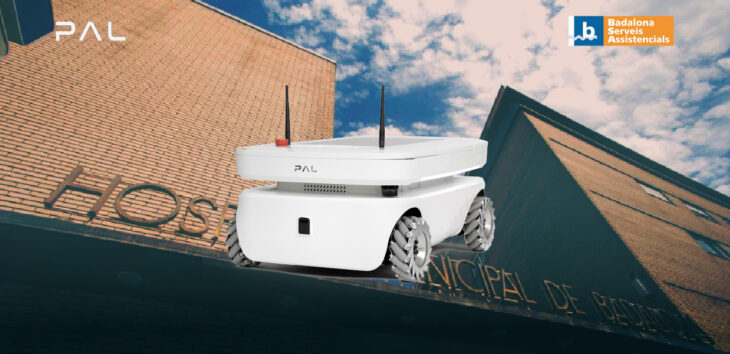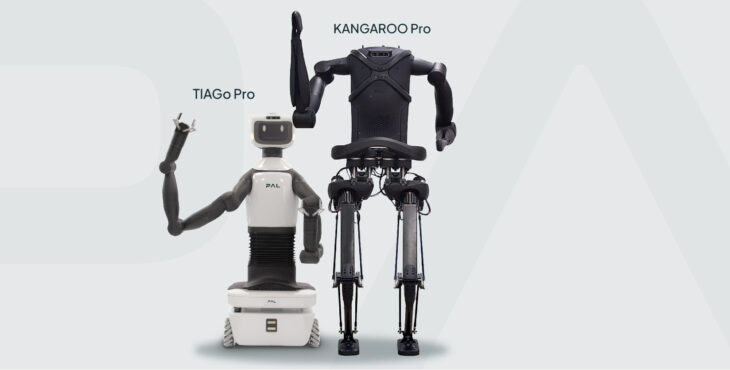The collaborative robot TIAGo during project ALMI
Recently PAL Robotics completed the international project ALMI (Ambient Assisted Living for Long-term monitoring and Interaction Integration) funded by Lloyd’s Register Foundation, following the development of robot manipulation capabilities to help users in the kitchen with meal preparation. Project ALMI focused on the development of adaptation methods enabling assistive robots to cope with the uncertainty and disruptions unavoidable in a home environment. Here we tell you more about the project, and the future aims for technological advancements for robots helping in the home which were developed during the project.
With a rapidly ageing population, the world is facing a social care crisis. Without a step-change in social care provision, especially for older people, the increase in the budgets and resources allocated to social care will soon become unsustainable.
To address these challenges, project ALMI was started in 2021. In project ALMI, PAL Robotics platform, TIAGo, was developed into a broad range of social robotic solutions. TIAGo robot used both its speech interaction for voice instructions and its object manipulation capabilities to help users with mild motor and cognitive impairments in the daily activity of preparing a meal. The TIAGo robot was adapted with the necessary manipulation capabilities and assurance evidence for the customized robotic arm, as well as environmental monitoring capabilities to build and maintain a knowledge base of objects, etc.
In more detail, the project goals included:
- Creating safety measures for robot users with mild cognitive and motor impairments
- Household-item robot handling capabilities
- Home-environment mapping and monitoring capabilities in the robot
- Robot demo showing safe and long-term capabilities
- Physical robot manipulation tasks
- Voice reminders performed by the assistive robot
Project final achievements including creating a sensorized robotic arm and a home-environment monitoring method
The project’s final achievements included: creating a sensorized robotic arm with a novel control technique for human-robot interaction through advanced force control with online trajectory adaptation.
As well as creating a home-environment monitoring method to develop a knowledge base enabling the provision of long-term robotic assisted-living support.
Methods for the generation and online updating of models and views enabling decision-making in robotic assisted-living systems.
Methods for the verification and synthesis of enabling adaptation plans in robotic-assisted living.
Finally, developing an assistive-living demonstrator involving an autonomous robot taking part in physical tasks and delivering voice reminders in a complex domestic activity.
Demonstration with assistive robot meal preparation and voice reminders
The demonstration scenario involved PAL Robotics’ TIAGo robot using both its speech interaction and its object manipulation capabilities to help a user with mild motor and cognitive impairments in preparing a meal. Here the robot provided:
- Step-by-step voice instructions guiding the user through meal preparation
- Handed the user some of the food ingredients, kitchen utensils, crockery, etc required
- Reminded the user where to find other items needed for the task that the robot could not reach or handle.
The tasks included modelling the initial version of ALMI, integration and system testing of the ALMI robotic platform (hardware & software), and finally testing and validating the final solution.
The final demo was a demonstration of a robot that can prepare a meal, with the ability to monitor the environment and status, save a map of all ingredients/objects and their locations by memory, stop and continue tasks due to unexpected interruptions, provide instructions to guide the user in preparing the meal, speech interact with the user and tell them where the object/ingredient is, as well as demonstrate object manipulation capabilities, such as fetching objects/ingredients and bringing them to the user.
The technical deliverables for this project included the safe manipulation of household items, such as the addition of brakes and torque sensors to the robot. In terms of environment monitoring and knowledge storing – the environment monitoring method was customised and included detailed information about the apartment, kitchen, furniture, objects, and ingredients. With these deliverables, the assistive robot was able to safely manipulate household items and provide detailed information about the environment.
Robot TIAGo with perception abilities including facial recognition and emotion recognition
PAL Robotics’ TIAGo robot combines perception, navigation, manipulation & Human-Robot Interaction skills out of the box.
- Manipulation – The end effectors can be grippers or humanoid hands and they can be quickly exchanged for performing various manipulation tasks.
- Navigation – TIAGo has autonomous navigation including mapping, localization, and obstacle avoidance all accessed through ROS.
- Perception – TIAGo includes perception abilities such as facial recognition, emotion recognition, and people tracking.
- HRI – Thanks to its touchscreen, and versatile gestures the platform is suitable for Human-Robot Interaction.
About project ALMI
The ALMI project focussed on a novel proof-of-concept robotic assistant. Service robots can perform many of the complex tasks required to provide assistance to people in their regular living environment. However, the adoption of assistive robots in health and social care is limited due to safety testing associated with their deployment in open-world environments.
The ALMI aimed to demonstrate how novel robotic technology, environment monitoring capabilities, verification techniques, and adaptation methods can be integrated and applied to address concerns for autonomous robots used in people’s homes. Partners in the project were PAL Robotics and the University of York.
At PAL Robotics we partner in a number of collaborative projects in healthcare and ambient assisted living, as well as projects covering areas such as agri-food, smart cities, and industry 4.0, Artificial Intelligence, and Deep Learning. We are always on the lookout for new collaborations, visit PAL Robotics’ collaborative projects page to find out more and don’t hesitate to get in touch with us to discuss working together.
Take a look at our blog to read more about our work and research.


